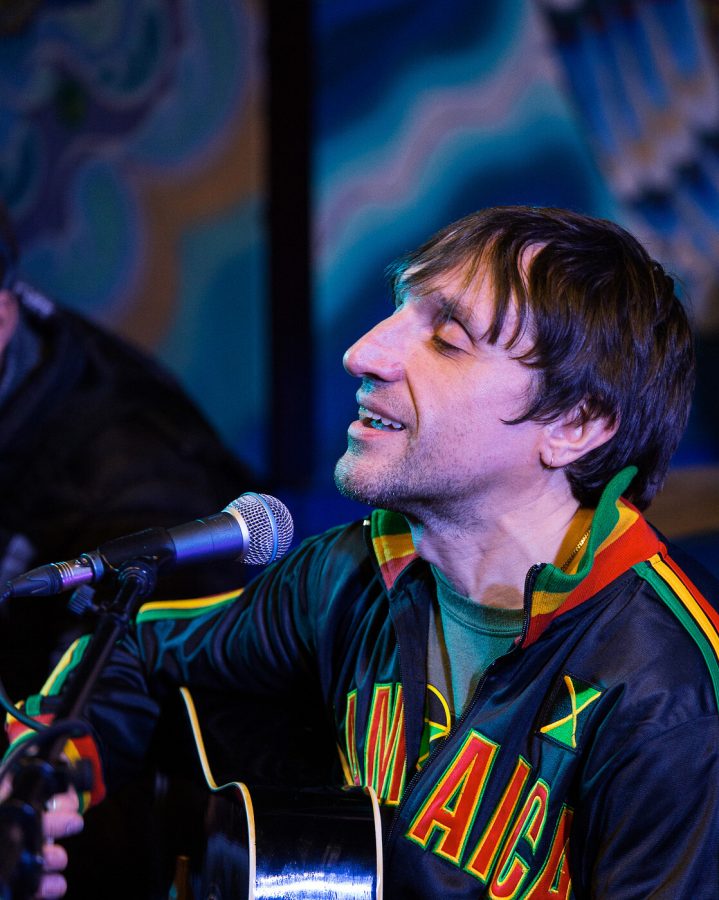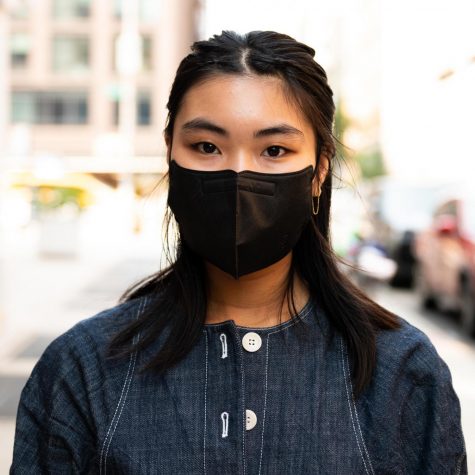NYU lecturer Misha Danilin on ’90s and 2000s concert culture, his own bands and the importance of shopping for music
Professor Misha Danilin singing with his band M.D. and The Healers. (Image courtesy of Misha Danilin)
November 24, 2021
This interview has been edited for length and clarity.
I wasn’t in a band when I lived in the Soviet Union. I mean, I was 18 and wanted to be in a band, but it just hadn’t happened yet. I really started making music in New York City. I was inspired to make music when I moved here because I was lonely. I had just moved from the Soviet Union and I didn’t know anyone! It was just me, here on my own, for six months.
When I arrived in this city, it had a bottomless nightlife. I started thinking about music projects. I had written some songs in the Soviet Union before I came in the ’90s. Eventually, I found a band: We have Mike Danilin on vocals and keyboards, Mikhail Musayev on guitar and back vocals, Nikita Karakchiev on bass, Boris Zeldin on drums and Andrey Yarygin, our sound engineer.
I’m in two bands today: One is an electric band called Interzona and the other is a reggae and world fusion band called MD & The Healers. One is super dark and reserved, whereas the other — you might have guessed — is chilled down. When you spend time on one project, you start to feel like you need change, so I transitioned to another musical identity to keep myself balanced.
We started off just like everybody else, trying to book shows and getting our friends to attend the shows. We performed at CBGB, which used to be huge, by the way — The Police and The Ramones and a bunch of others debuted there. I had goosebumps the first time I stepped in there because I knew there was so much history. Back then, it wasn’t considered trendy and mainstream, just a cool place where a bunch of musicians performed. I even have a friend who performed there, and they got $20 back then and they have it framed it to this day — that’s how special this club was to musicians back then. We felt so lucky to perform there.
Back then, it wasn’t difficult booking gigs. You could pass a cool venue, enter, and ask who was responsible for booking bands. Normally, they’d tell you to leave your CD here, and if they thought you were okay, you could even get a 45-minute showcase without any difficulties. Right now, you have to sign a bunch of forms and guarantee that a certain number of people will come.
A club is just a club. The most important thing that has changed about them — and I wouldn’t blame the clubs, because clubs simply reflect people’s sentiments — is that music is now more background music. We play it while doing something else nowadays because music is so accessible. You no longer have to make any effort to hear it — now you have to make an effort to make yourself heard in the crowds of people trying to become musicians, and that’s why it’s so difficult to book gigs. There is so much talent everywhere because it’s so easy to get your hands on.
Back then, the effort to find music was considered cool. Shopping for music was a thing and it would take hours — you would hit up this store first, then this one and another. You’d meet people, you’d exchange band recommendations, you met potential band members. Oh, what a time. So the culture of clubs was more open to musicians back then. They were willing to accept bands even if you only had five people come. That was okay! They would even give you second chances. Today, it’s not like that.
One of the clubs that influenced me was this place called Albion Batcave. There used to be three dance floors, a lounge, a bar and a dance floor. It was packed on Saturday nights. There had to be a few thousand people in that building. There were lots of cyber-gothic people. I saw the way people presented themselves in there, and I found myself finding similarities between the way they dressed and who I was. So, from then on, I started dressing in all black.
We started as electronic music at first. What many people don’t know is that it didn’t start in Europe where it became mainstream. It started in the Black Latin gay community in the ’60s in the West Village, then it became a huge thing toward the end of the ’90s when it was reborn in Europe before coming back to the U.S. So this community would organize parties where they would party like there was no tomorrow. The vibe, the energy, the way people were able to express themselves attracted non-Black, non-Latin and non-gay people because [they] wanted to experience this vibe. EDM happened because synths and drum machines were affordable, so artists would purchase and create these really experimental tracks people danced to.
We would laugh if you called us rock ‘n’ roll back then — we were post-new wave! As a youth, I was very opinionated, and I had this perception that rock ‘n’ roll no longer existed. I never imagined that youngsters in 2001 could play rock ‘n’ roll. I thought of music as a linear continuation. It never occurred to me that in the underground circle of New York rock groups like Gypsy would form. Well, once they happened, I started seriously doubting my own predictions. I realized rock ‘n’ roll takes on different forms in different phases of society. Rock is larger than music — it’s an entity that provides messages for liberation, of freedom, it changes history. Electronic music was the rock ‘n’ roll of the ’90s, and hip-hop is modern rock ‘n’ roll.
The most special performance was our second or third performance that took place at Hammers Ki. We were opening for Russia’s Aura Festival. Back then, the biggest Russian bands came and performed there, and our band opened. It also coincided with my birthday, which is great.
We also had a short tour in Russia and Ukraine in 2005, and the experience of the audience was so different. People were dancing on tables, going crazy. The club owner himself was dancing in front of the stage. We were so surprised by it all — it was so different from how people reacted in New York!
The only modern place in New York that was like what it was back then was Coney Island Baby on Avenue A. They opened in 2017 but have already closed down. The place was just too good to be true — ’80s and ’90s club vibes. I don’t know where else in Manhattan is good today.
Contact Joey Hung at [email protected].




























































































































































